
Perennial plants: how to choose?
A selection of floriferous and easy plants for your garden
Contents
There has been a growing interest in perennial plants for many years. The reason is simple: once planted, these plants return each year, more robust and opulent, reducing the chore of weeding. They often live for a long time, making them a time-saver for gardeners and a considerable saving for their wallets too!
There are truly perennials for every taste and every type of garden, those selected for their flowers and those we adore for their beautiful foliage, those that thrive in shade and those that crave sunlight, drought-tolerant perennials and those that prefer cool soils…
Among the vast diversity of these plants, how can one navigate and choose the ones that will sustainably accompany your flower beds? We provide some answers in this advice sheet, selecting the easiest, the perennial flowers with long flowering periods, those special for beginners, and the hardiest.
 Perennial plants allow for the creation of very beautiful, generous flower beds with abundant blooms and foliage.
Perennial plants allow for the creation of very beautiful, generous flower beds with abundant blooms and foliage.
Perennials for Beginners
When you’re a beginner in gardening, or setting up your first garden, it’s reassuring to know about the easy-to-plant perennials that guarantee success. It’s true that some can be a bit fussy, not necessarily providing a satisfying visual after a year, or requiring special care to thrive.
Among the foolproof perennials for the garden, these are fast-growing, allowing for flowering or ground cover in the first year of planting. Hardy, they enter dormancy by shedding some of their foliage, only to return in spring with a spectacular display of colours!
- Heucheras: Increasingly popular in shady gardens, this is a perennial that combines stunning foliage in a range of vibrant colours with a very light flowering of tiny flowers above the foliage, adding to its charm. Heuchera thrives in semi-shaded gardens. It’s a lovely option for filling borders and harmonising its hues with surrounding plants. Additionally, it is quite drought-resistant once established.
- Agastaches: Sometimes confused with salvias (equally easy), Agastaches are highly ornamental and very easy to grow perennials. They are drought and cold resistant, showcasing deep colours, often mauve to purple, but also coral… Their upright flower spikes are melliferous, and the aromatic foliage forms a lush clump. It’s a “must-have” for sunny gardens!
- Gypsophilas: an ultra-graceful, airy perennial with delicate white pom-poms, sometimes pink in certain varieties. Gypsophilas bloom in the sun for a long time in summer, even in poor soil, and adapt very well in pots. You can use them to create lovely bouquets. Perfect for romantic gardeners or in a white garden! The Gypsophila ‘Bristol Fairy’ is a classic.
- Persicarias: trendy perennials, and for good reason: they add a lot of volume and colour for at least 3 months in the garden. Between the low Persicarias (mainly Persicarias affinis and bistorta) and the taller ones reaching about 1m (Persicarias amplexicaulis), they are perfect for borders or the middle of beds. Some even have original foliage, variegated or purplish. The flowers in spikes range from pale pink to deep Indian pink.
- Lychnis coronaria: the Garden Campion is a well-known vicar’s garden plant, but truly charming, perfect for beginner gardeners. It grows in any soil, preferring calcareous but well-drained soils. This is an essential perennial for country, naturalistic, or English gardens, bringing a lot of charm and softness with its grey-green, fluffy foliage. The flowers are either white or pink, borne on rigid stems up to about 50 cm tall. A very suitable perennial that is also drought-resistant. It self-seeds, and you can easily obtain new rosettes to replant.
⇒ But also Carex, Nepetas, Sedums, Epimediums, Hellebores, Tulbaghias, etc.

Gypsophila, Garden Campions in white and pink, Salvia nemorosa ‘Caradonna’, Persicaria ‘Firetail’ and Heuchera ‘Marmelade’
Discover our complete range of easy-to-grow perennials and fast-maturing perennials
Long-flowering perennials
Among the qualities most sought after in a flowering plant is the duration of flowering, even though we know that these coveted flowers are ephemeral. However, some perennials are champions in this area. They bloom from spring until frost, making them standout plants in the garden. Here are some of these essential perennials known for their floral endurance:
- Alstroemerias: The Inca lilies are among the record flowers for their flowering. These exotic-looking perennials are perfect for enhancing sunny or semi-shaded borders. Their trumpet-shaped flowers offer warm colours, often in beautiful bicolour shades, elegantly striated with purple. Blooming from June to October, in both dwarf and giant varieties, be sure to plant them in cool, well-drained soil.
- Alchemillas: One of the favourite perennials of many gardeners! It must be said that it has unbeatable qualities: a sought-after chartreuse green colour to brighten gardens, original foliage that is cut and plicate, retaining morning dew, excellent hardiness, and a cloud of yellowish flowers that lasts from June to August! Perfect for the edge of a mixed border, effective as groundcover, charming in a bouquet, you’ll want to adopt it, ideally in semi-shade.
- Hellebores: Among the perennials with long flowering periods, you can also count on hellebores, the graceful stars of winter gardens. While the well-known Christmas Rose (Helleborus niger) begins its flowering early in December, the oriental hellebores, including Helleborus argutifolius, continue this flowering from January to April, providing at least 3 to 4 uninterrupted months of flowers during a season that truly needs them!
- Gauras: How can we not mention Gauras, blooming from June to October, a true boon for natural or contemporary gardens? They form a very light and flexible bush, stunning! Their flowers are either white (more hardy) or pink, depending on the cultivars. These are sun-loving perennials, thriving in dry, poor, and well-drained soil.
- Buenos Aires Verbena: Frequently seen in urban landscaping and gardens, Verbena bonariensis is another flowering perennial that lasts for long months, typically from June to October, or even longer in mild climates. This magnificent perennial, of great stature as it can reach up to 1.5m tall, remains ultra-light thanks to its violet flowers gathered in terminal panicles on grey-green stems. A beauty not to be missed, especially since it self-seeds like Gauras, allowing for new plants elsewhere in the garden…
- The Tulbagias, finally, are also champions of flowering, and very elegant. This bulbous perennial from South Africa rewards us with mauve flowers, sometimes white in a few cultivars, between May and October. The lanceolate foliage is also very ornamental. It thrives beautifully in pots on a sunny terrace or in seaside gardens.
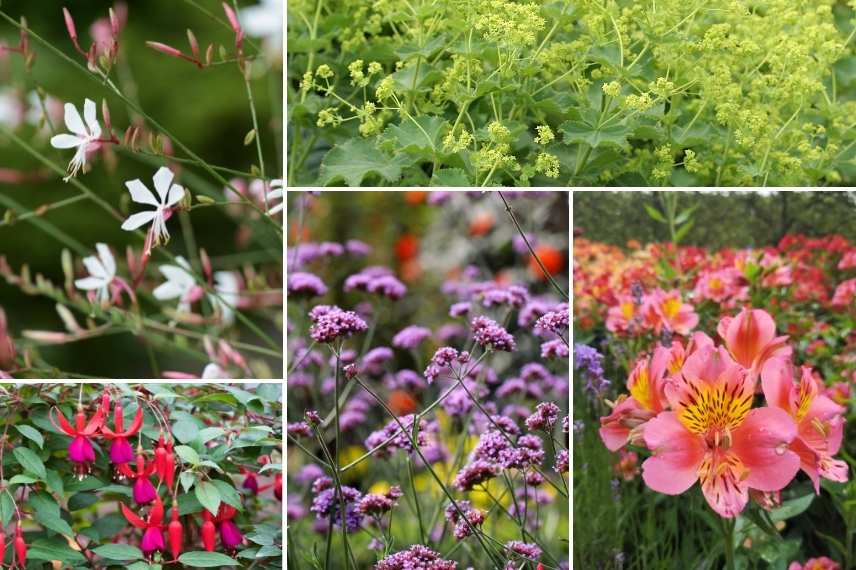 Gaura de lindheimeri, Alchemilla mollis, Fuchsia, Verbena bonariensis, and Alstroemerias[/caption>
Gaura de lindheimeri, Alchemilla mollis, Fuchsia, Verbena bonariensis, and Alstroemerias[/caption>
⇒ Also consider hardy geraniums, Convolvulus cneorum, Achilleas, hardy Fuchsias, Kalimeris, fleabane (Erigeron), Penstemons…
Read also: 7 perennial flowers blooming all summer and 7 sun-loving perennials with long flowering periods
Discover other Perennials
View all →Available in 1 sizes
Available in 0 sizes
Available in 1 sizes
Available in 1 sizes
Available in 1 sizes
Available in 2 sizes
Available in 1 sizes
Available in 1 sizes
Available in 1 sizes
Available in 1 sizes
Low-maintenance perennials
Easy-to-grow perennials are sought after by everyone. While a perennial plant, by definition, requires little care, some are truly maintenance-free, needing almost no watering once established, robust and reliable. Here are a few examples:
- Campanulas: These delightful perennials with blue bell-shaped flowers are astonishingly easy for gardeners. Once planted, they take care of themselves, except for the first year after planting when, like all perennials, a minimum of watering is required. After that, they spread on their own and form charming borders in almost any exposure and soil type, depending on the cultivar.
- Spring bulbs: These perennials have the huge advantage of concentrating all their energy in their underground storage organ, bringing vibrant white, pink, or blue blooms to the still-sleeping garden. So, once planted, you can enjoy watching them grow, with no other requirement than to let the foliage yellow so the bulbs can regenerate.
- Sedums: Sedums only require cutting back their stems left in place over winter, around February or March, as soon as the new rosettes appear. Otherwise? Well, there’s nothing to do; they return each year, just as beautiful and vigorous, charming with their fleshy blue to purple foliage and their pink corymbs attracting butterflies and bees.
- Liriopes: For shady gardens, Liriopes are incredibly easy to grow. They may be a bit slow to grow, but they are so rewarding, as they require no maintenance if you provide them with what they need: cool, well-drained soil. They particularly tolerate drought.
- Hostas: Often mentioned for all their benefits—remarkable foliage, hardiness, long lifespan, beginner-friendly plants… Hostas are also hassle-free for gardeners. If you respect their growing conditions, namely cool soil and a partially shaded to shaded exposure, avoiding scorching sun, Hostas will reward you abundantly! Just perhaps cut the flower stems after flowering and be mindful of slugs, following our advice!
⇒ But also Hellebores, Persicarias, Lysimachias, hollyhocks…
⇒ Also, check out Alexandra’s advice sheet on very long-lived perennials and caring for perennial plants.
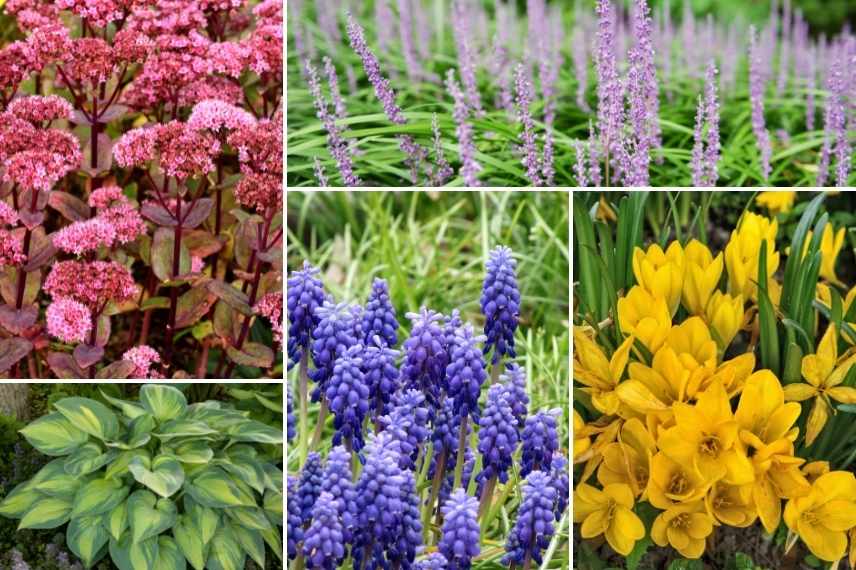
Sedums, Liriopes, Hostas, Muscaris, and Crocus
Hardy perennials
The hardiness of a plant is one of the major criteria when deciding on a specific species or one of the cultivars available for sale. Depending on the region where you live, it is possible to plant more or less cold-sensitive plants. Regarding perennials, many do not require mulching as winter protection, particularly all bulbous plants that enter dormancy after flowering and deciduous perennials.
- Sedums: Also known as stonecrops, these late-summer perennials are a delight in the garden when flowering begins to wane. Planted in specially drained soil and in full sun, sedums are cold-resistant, even showing their new shoots in the middle of winter.
- Hostas: Completely disappearing from the ground around November, Hostas with their large veined leaves, in various shades from yellow to vibrant green, blue, and variegated cultivars, are very hardy. Essential for creating beautiful clumps in shady borders, they will take 2 to 3 years to reach their full size.
- Peonies: Herbaceous perennials, Chinese or Japanese Peonies are perfectly hardy due to their Asian origins (the tree peony is slightly less so). They offer one of the most beautiful spring flowerings, with impressive flowers boasting countless petals and an incredible diversity of varieties and colours. A bit slow to grow, but so beautiful that we forgive them!
- Grasses: It’s hard to single one out, grasses are ultra-hardy perennials (with the exception of Pennisetum ‘Rubrum’). They are at their peak beauty in late summer, often taking on evolving hues into autumn and maintaining a unique appearance in winter under frost. Most are sun-loving, including Panicum virgatum, Miscanthus, Calamagrostis, and other Carex… among others!
- Acanthus: Sculptural perennials, Acanthus are valued for the beauty of their glossy, deeply cut, and broad foliage, creating magnificent clumps, as well as for their flowering which emerges in upright spikes of white and pink in summer. These perennials are cold-resistant, entering dormancy for long months before re-emerging in the middle of winter, gradually filling out until spring. They thrive in full sun, partial shade, or even in shade where they will flower a bit less.
- Muscari: Like all bulbous perennials, Muscari are perfectly hardy, allowing them to be planted anywhere. They have one of the most attractive spring flowerings with their tiny blue tubular flowers grouped in compact clusters. They naturalise quickly, forming charming borders in all gardens.
> Learn more with our advice sheet: 5 very hardy perennial plants unaffected by frost
⇒ Also consider Anthemis, Columbines, Amsonia hubrichtii, Hollyhocks, Gypsophila, Poppies, Persicaria, Asters, Japanese Anemones, Bergenias, hardy geraniums, Tricyrtis…
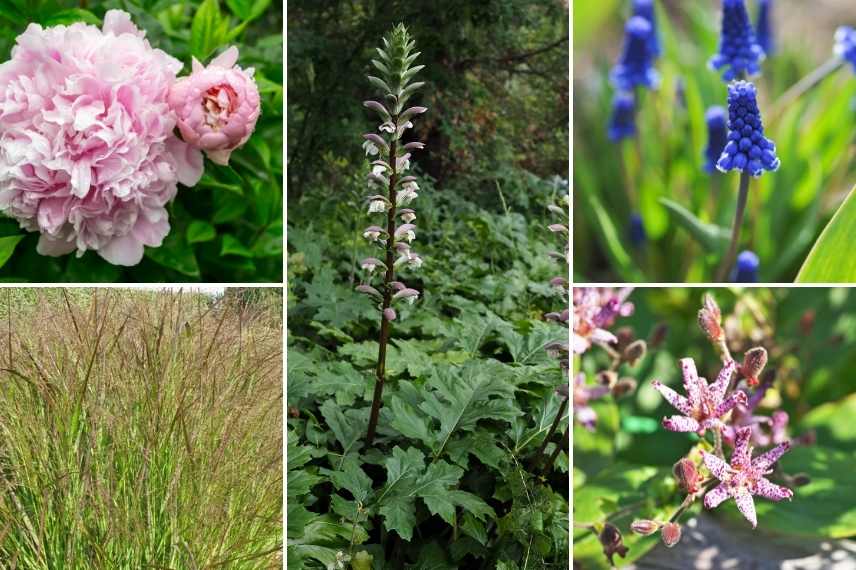
Paeonia, Panicum virgatum, Acanthus mollis, Muscaris armeniacum and Tricyrtis
Evergreen perennials
Here is another quality that is interesting to consider when choosing a perennial plant, as evergreen foliage provides decorative visuals all year round. This small selection is very hardy and offers equally interesting flowerings:
- Bergenias: the “Shoemaker’s Plant”, a quirky name for a perennial with short rhizomes whose large, ovate, glossy leaves remain evergreen throughout the year: they often take on shades of red or bronze in winter depending on the cultivars, and the pink to purplish-red flowers appear between December and April. Bergenias are beautiful groundcover plants for semi-shaded to shaded areas, and by choosing early and late varieties, one can enjoy a lovely floral carpet for many months.
- Euphorbias: There is a wide variety of Euphorbias, perennials appreciated for their lovely tangy flowers as well as the ornamental quality of their foliage, which is usually bluish and arranged in whorls of fine leaves all around and along the stems. Many prefer full sun, but some, like Euphorbia amygadoides, require shade. All need well-drained soil. They form beautiful, generous clumps, slightly spreading up to 1 m in height.
- Epimediums: the Elf’s Flower has a subtly delicate flowering in spring, but it is especially valued for its groundcover qualities as many varieties are evergreen. The leaves are heart-shaped and elongated, and depending on the cultivars, they display beautiful marbling and veining, adding to their appeal. They are ideal in dry soil, at the base of trees.
- Iberis sempervirens: often referred to as the Candytuft, it has a persistent foliage made up of small, linear, dark green leaves, forming a lovely sprawling tuft, about 30 cm high, perfect for rockeries or dry gardens. This woody-stemmed perennial thrives in very sunny locations, where it produces pure white flowers in spring, literally covering the foliage.
- Hellebores: while Hellebores could be mentioned in all the criteria of this advice sheet, it is, after their flowering, their foliage that attracts gardeners: the toughest leaves, often beautifully dentate or marbled, are found in Helleborus argutifolius and Helleborus sternii, in particular.
⇒ But also hardy geraniums, heathers, fescues, and Helictotrichons, Carex, the Aspidistras, Dianthus, Dryopteris…
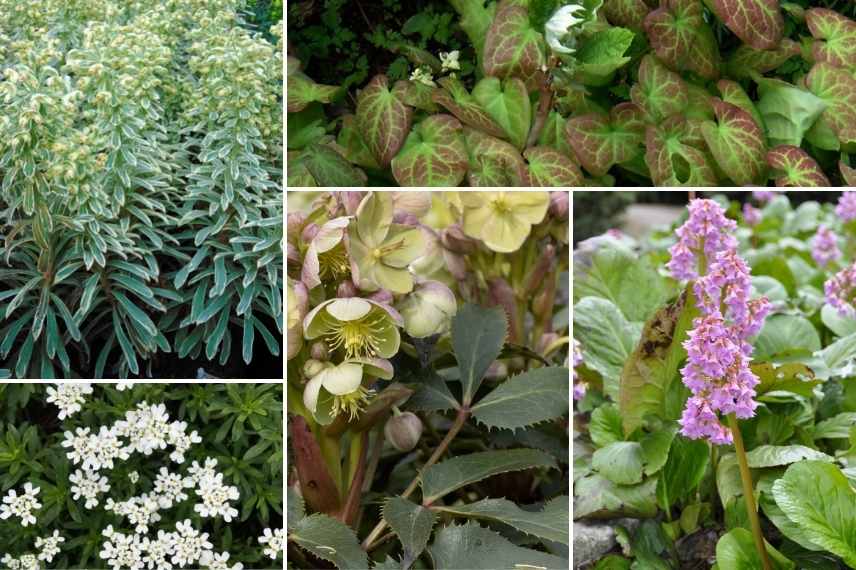 Euphorbia characias ‘Silver Swan’, Epimedium sulphureum ‘Cupreum’, Iberis sempervirens, Helleborus sternii, and Bergenias
Euphorbia characias ‘Silver Swan’, Epimedium sulphureum ‘Cupreum’, Iberis sempervirens, Helleborus sternii, and Bergenias
- Subscribe!
- Contents
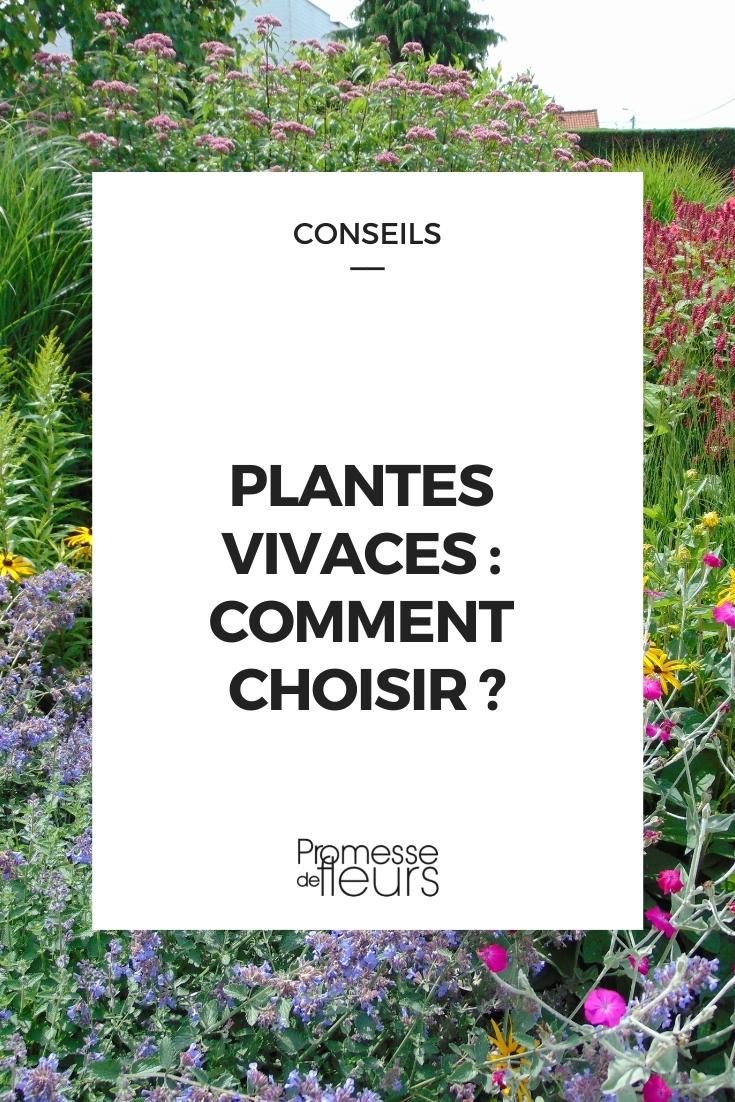































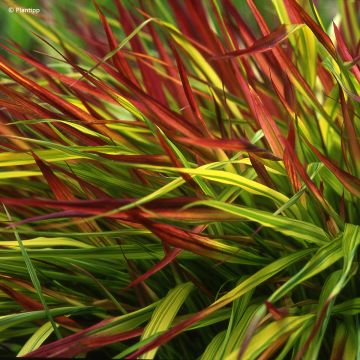


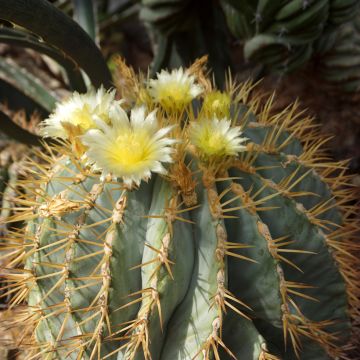


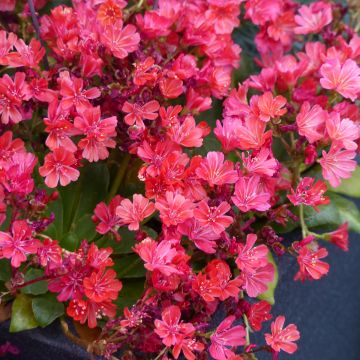
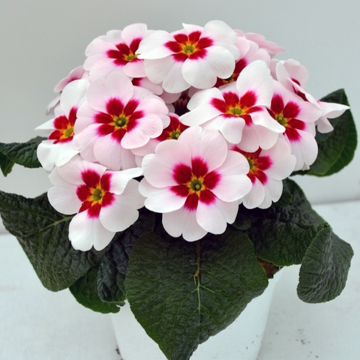

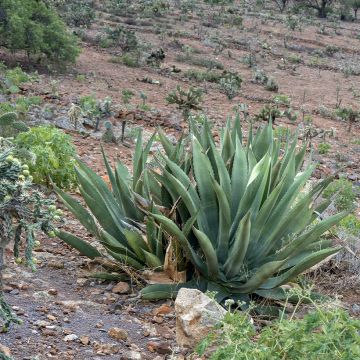
Comments